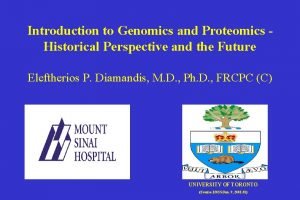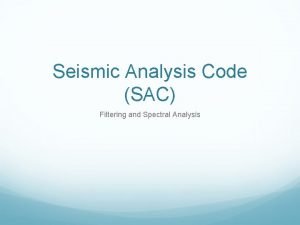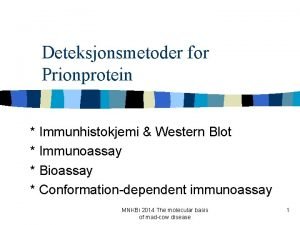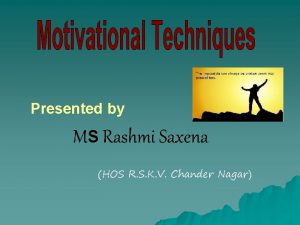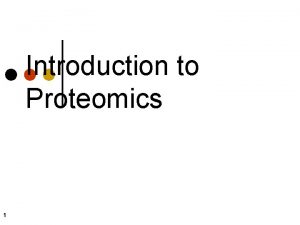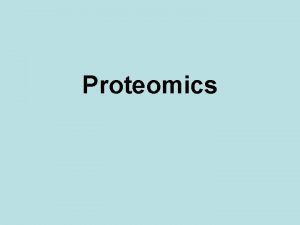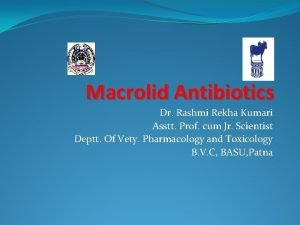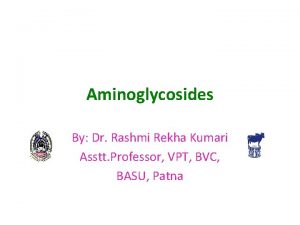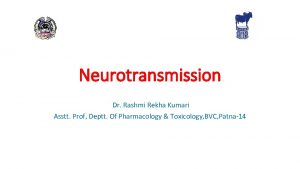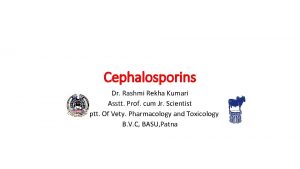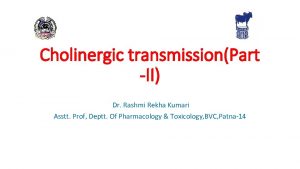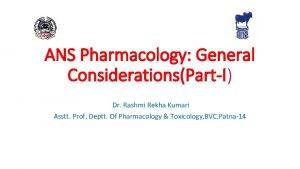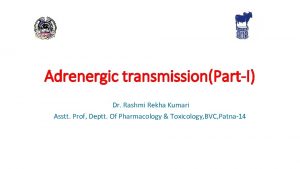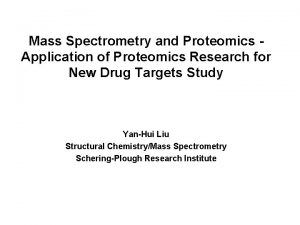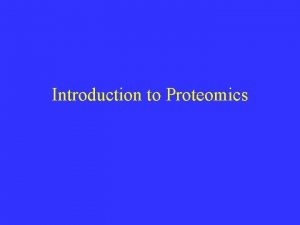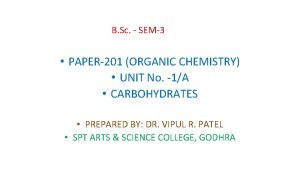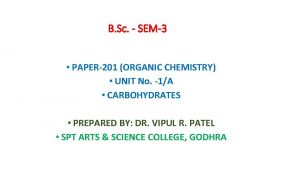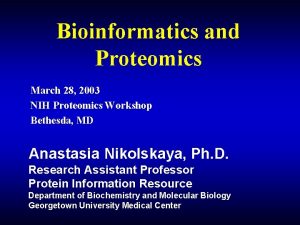PROTEOMICS Tools Techniques Application KUMARI RASHMI SEM3 Introduction


















- Slides: 18

PROTEOMICS Tools, Techniques & Application KUMARI RASHMI SEM-3

Introduction �Proteomics is the large-scale study of proteins, particularly their structures and function. �Proteomics is the systematic study of all of the proteins in a cell, tissue, or organism. �The term proteomics was coined in 1994 by Marc Wilkins. �The study of the Proteome. �The proteome is the entire set of proteome expressed by a genome, cell, tissue or organism.


Proteomics classification �Expression �Cell map or Interaction �Functional �Structural

Steps in Proteomic Research �Sample collection, handling and storage. �Protein seperation �Protein identification and characterization

Techniques used in Proteomics study � 2 -D gel electophoresis �ICAT(isotope coded affinity tags) �Mass spectroscopy �MALDI �PMF(Peptide mass fingerprinting)

2 -D gel electophoresis Sample preparation buffer composition IPG strip rehydration 1 st dimension: IEF run § 2 nd dimension: SDSPAGE § Gel staining § Imaging § §

ICAT(isotope coded affinity tags) �Using ICAT you can compare relative protein abundance between two samples. �ICAT is particularly useful for comparision between healthy and diseased tissue

Mass spectroscopy �Used for protein identification. �Mass spectrometer seperates proteins according to their mass-to-charge (m/z) ratio. �used for determining masses of particles, for determining the elemental composition of a sample or molecule. �The molecule is first ionized which results in the formation of charged particles. The ions are separated according to their (m/z)ratio in an analyzer by electromagnetic fields.

MALDI Matrix-assisted laser desorption/ionization � is a soft ionization technique used in mass spectrometry, allowing the analysis of biomolecules and large organic molecules.

PMF(Peptide mass fingerprinting) �technique for protein identification

Database of proteomics �PRIDE-The PRIDE PRoteomics IDEntifications database is a centralised, standards compliant, public data repository for proteomics data. �PROTICdb access- PROTICdb is a tool developed by INRA that we have chosen for storing and processing our proteomic data. � The PPDB stores experimental data from in-house proteome and mass spectrometry analysis, curated information about protein function, protein properties and subcellular localization.

Human Proteome Project �Launched by the Human Proteome Organization (HUPO). � Designed to map the entire human protein set. �the three working pillars for HPP: Ø mass spectrometry, Ø antibodycapture, and Ø bioinformatics tools & knowledge bases.

Application of Proteomics � Nutrition Research �diabetes research. � Cardiovascular research. � Autoantibody profiling for the study and treatment of autoimmune disease. � Urological Cancer Research �Fetal and maternal medicine � Neurology � Renal disease diagnosis. � Study of Tumor Metastasis. �Protein Biomarker

Research Areas in Proteomics �Quantitative proteomics �Phosphoproteomics �Glycoproteomics �Proteogenomics �Neuroproteomics �Plant proteomics �Toxicoproteomics �Ethnoproteomics

Software for Proteomics Software Description � Bhageerath � Protein Structure � Predicts native-like structures for Generation � Persistence Length � Radius of Gyration � Hydrophobicity � Pro. Reg. In � Protein structure optimizer � Pro. SEE - Scoring Function for Protein Structure Evaluation � � � � small globular proteins Structure Generation from given dihedrals Filters for Globular Protein Evaluation Protein Regularity Index Energy minimizer for proteins Calculates intramolecular energy of a protein in component-wise break up.


Thank You
 Comparative proteomics kit ii western blot module
Comparative proteomics kit ii western blot module History of proteomics
History of proteomics Sac spectrogram
Sac spectrogram Mad cow disease
Mad cow disease Yosin hitomi
Yosin hitomi Comparative proteomics kit ii western blot module
Comparative proteomics kit ii western blot module Carmelego
Carmelego Dr rashmi halker
Dr rashmi halker Dr rashmi saxena
Dr rashmi saxena Rashmi choudhary presenter
Rashmi choudhary presenter Dr rashmi choudhary
Dr rashmi choudhary Rashmi kohli
Rashmi kohli Fascia function
Fascia function Rashmi paramkusham
Rashmi paramkusham Puja kumari xxx
Puja kumari xxx Kumari kandam proof
Kumari kandam proof Ambika kumari who built the sivasagar tank was the queen of
Ambika kumari who built the sivasagar tank was the queen of Rajkumari amrit kaur coaching scheme
Rajkumari amrit kaur coaching scheme Sonia kumarii and dog
Sonia kumarii and dog

